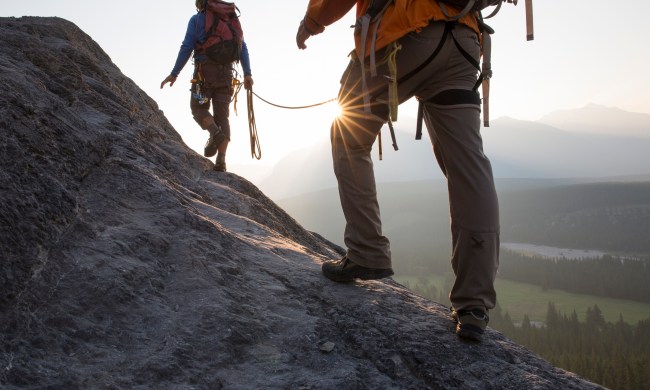As an outdoorsman, you should have a range of useful outdoor knots to call on at any time. The double figure-eight knot — also known as the figure eight loop knot — is perhaps the most secure knot you can tie. This knot is renowned among rock climbers as a replacement for the bowline when tying into a rope and is preferred because it doesn't risk untying itself if you leave it in situe.
The double figure-eight knot has almost endless uses for the everyday outdoorsman, from tying down guy lines on a tent, hanging a bear bag with a carabiner, tying your kayak to the roof of your car, or just being used as a stopped to prevent a rope sliding through a cleat. The figure eight is a useable knot for tying a mid-line loop as well, but you're better off with the alpine butterfly if you want to load either end of the line.
There are two ways to tie a figure 8 knot. You can either tie it on a bight — leaving you with a closed loop ready for a carabiner — or you can rethread your figure eight for tying directly around an object. Here's how to do both.
Tying a double figure-eight knot on a bight
The double figure-eight knot on a bight is a quick and easy way to create a secure loop. The figure eight loop knot on a bight is useful for creating a loop to attach a carabiner to — for example for hanging a bear bag — or at the end of a guy line to attach your tent peg to.
Step 1: Lay out a bight of rope on the grass. You will need each end of the loop to be several inches long to ensure you have enough rope to tie your double figure eight.
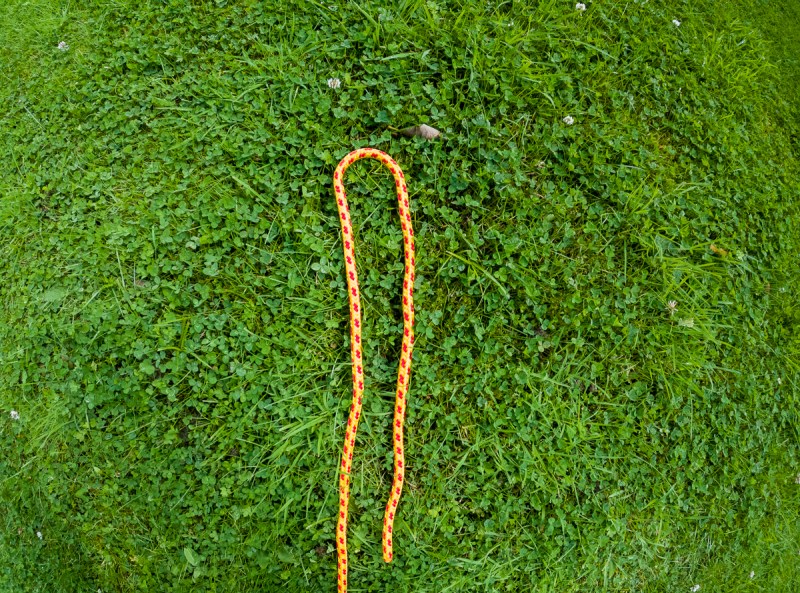
Step 2: Make a loop using the bight. Take the working end of your bight over the top of the standing end.
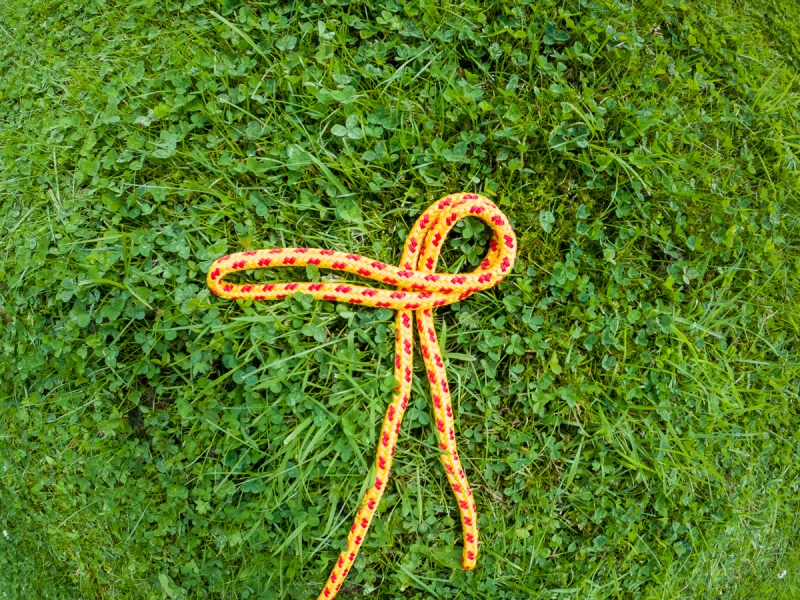
Step 3: Take the working end of your rope around the back of the loop.
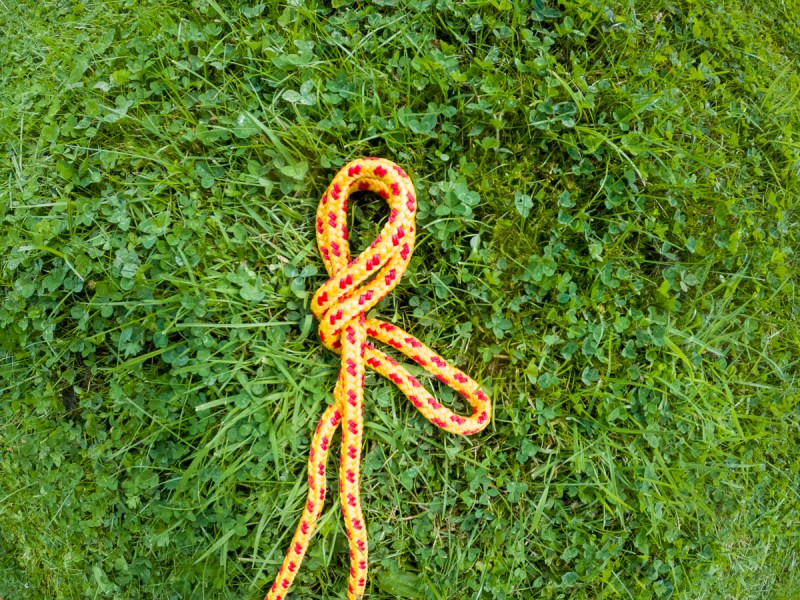
Step 4: Now feed the working end of your bight through the loop. At this point, your knot should look like a figure eight. If it looks more like a pretzel, you haven't wrapped around the loop far enough.
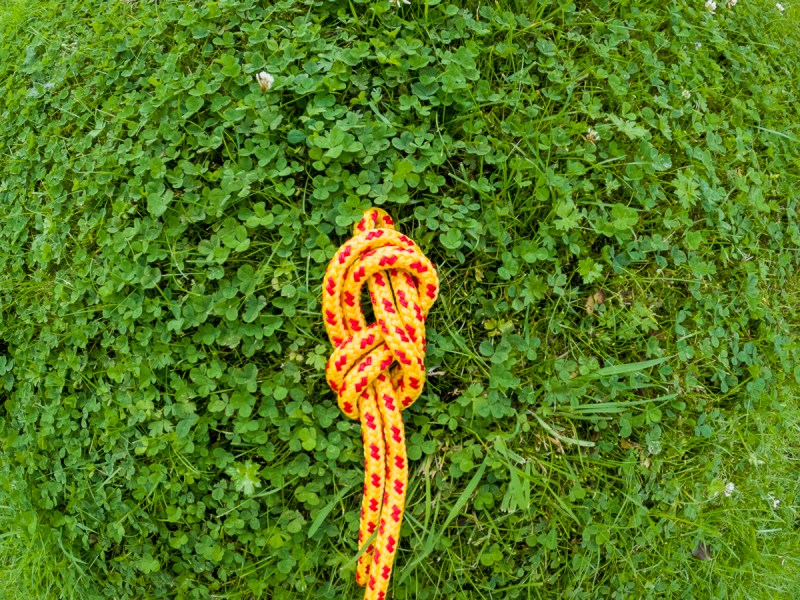
Step 5: Tidy up your knot and seat the rope properly. You should aim to have a tail of rope that is 2 to 3 inches long to keep this knot secure. Feed rope through the knot to adjust the tail and the size of the loop if necessary.
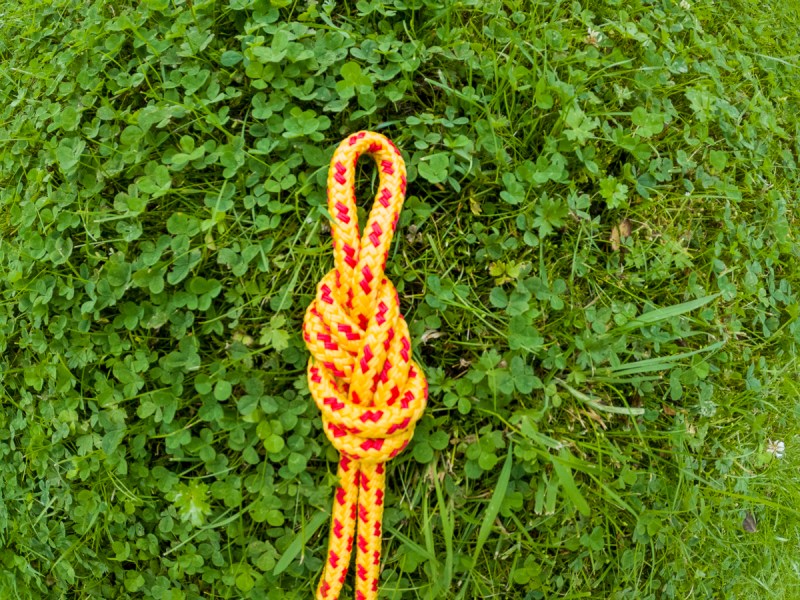
Tying a rethreaded figure-eight knot
The rethreaded figure eight loop knot is used by climbers to tie into their harness. This eliminates the need for a carabiner and reduces the links in the chain — fewer links mean less likelihood that something fails. You can also use the rethreaded figure eight to tie around trees or poles, for securing tarps, hammocks, or anything else you want to keep secure.
Step 1: Tie a single figure-eight knot by following the steps above, but using a single end rather than a bight of rope. Ensure that your working end has a long enough tail to reach around the tree or pole and to retrace the knot.
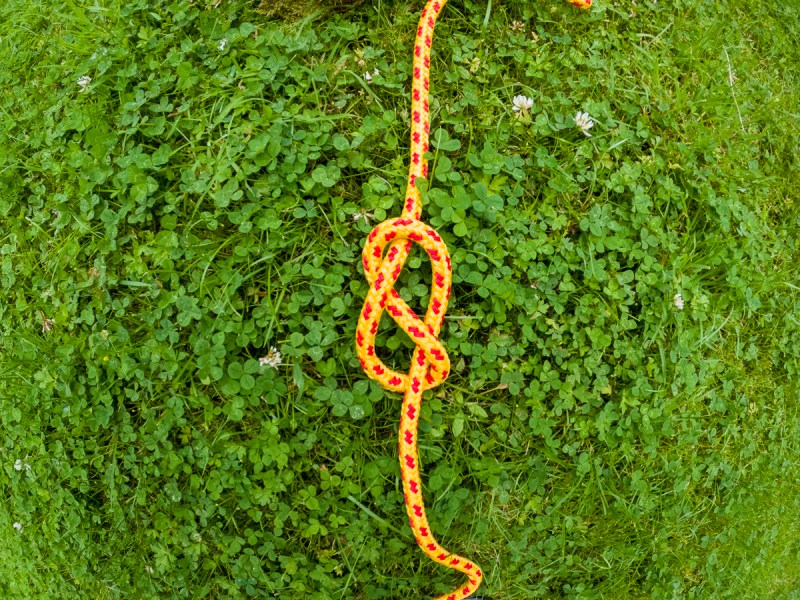
Step 2: Feed the working end around the tree or pole and begin to retrace the pathway of your figure-eight knot. This should be done in reverse, starting your rethreading at the point your working end left the single figure eight.
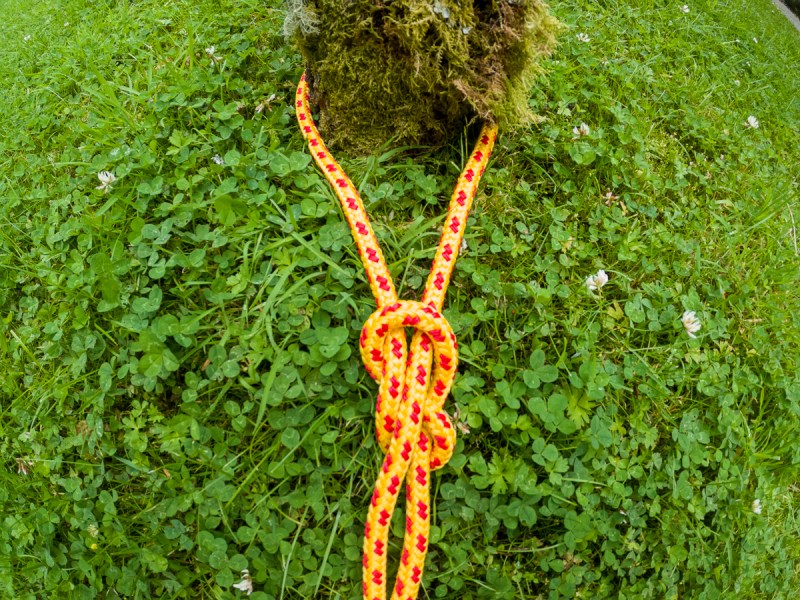
Step 3: Continue to rethread your figure eight. Take care to follow the original knot closely - this can take some practice and you may get lost on the first few attempts.
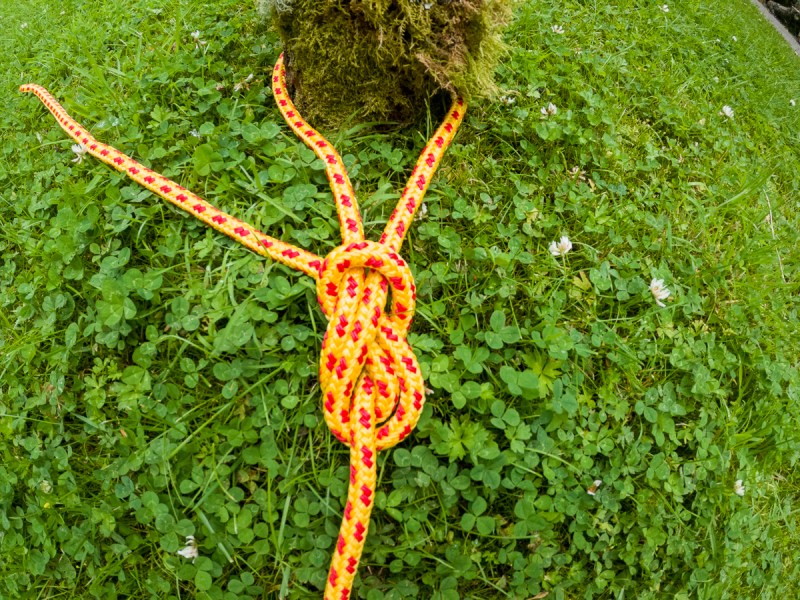
Step 4: Once you finish retracting your knot, ensure the ropes are all seated neatly and pull it tight. Feed rope through from either end to ensure you have a 2-to 3-inch tail at the end of your knot and that your loop is an appropriate size.
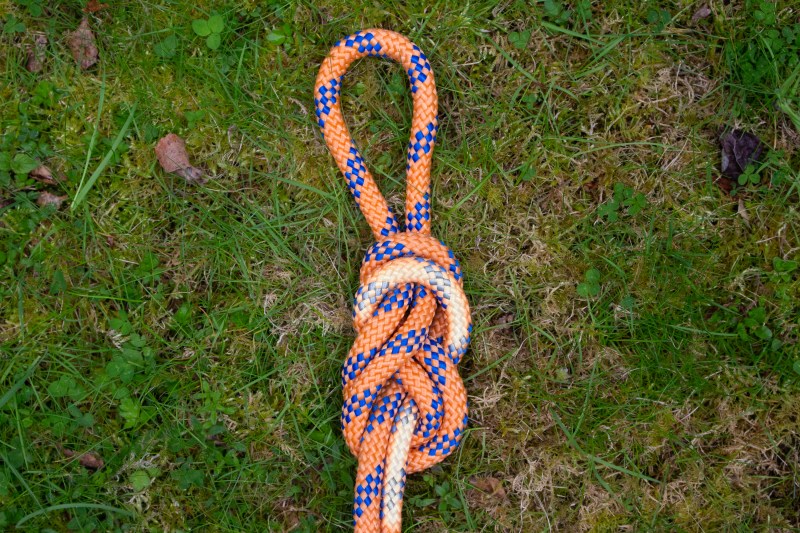
How to tie a figure-eight knot that is easy to untie
Mention tying a figure-eight knot to anyone who has ever subjected this knot to a heavy load, and you'll get told how difficult it can be to untie. Fortunately, there's a secret to success that can turn this highly secure knot from a 5-minute struggle into an easy untie once you're finished using it.
The key is in what is referred to as the load strand — shown highlighted in the photo. The load section of your rope — to take a climbing example — is the majority of your rope itself, the section that would run up through a carabiner and down to a belayer if you were rock climbing.
The load loop is the final loop in the knot before this length and is the section subjected to the greatest immediate force as your figure-eight knot is loaded. This loop should be on the inside of the knot as above rather than outside the strand leading to the tail. This setup means that as your knot is subjected to force, it doesn't cinch in on itself and leaves you a looser end to start untying from.
How to untie your figure-eight knot
There are simple steps to untie your knot easily:
- As well as the above, make sure your knot is dressed properly — the knot should be neat without strands crossing over one another — and pull all four ends individually to make sure forces are applied equally.
- Break the back of the knot. Try to bend and wiggle the knot from the midpoint to get some movement into the rope before you start just pulling.
- Feed rope into the knot from either end. The more rope you can push into the knot itself, the looser things will become and the easier it will be to untie.
The figure-eight knot is one to spend time practicing so you know your knot is going to be seated properly and easy enough to untie. Next time you need a secure knot to leave in situ overnight, or to leave while you're away, pull out the figure eight.



